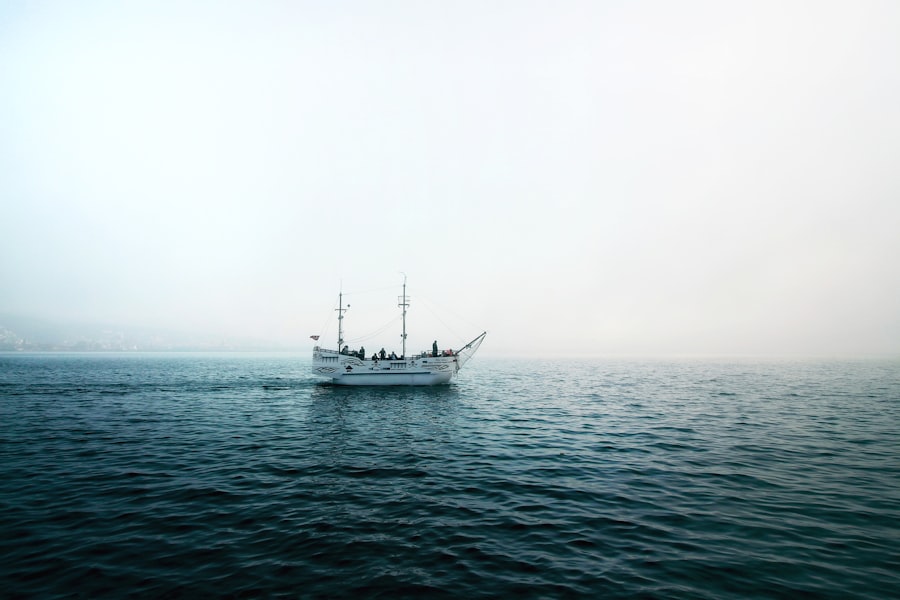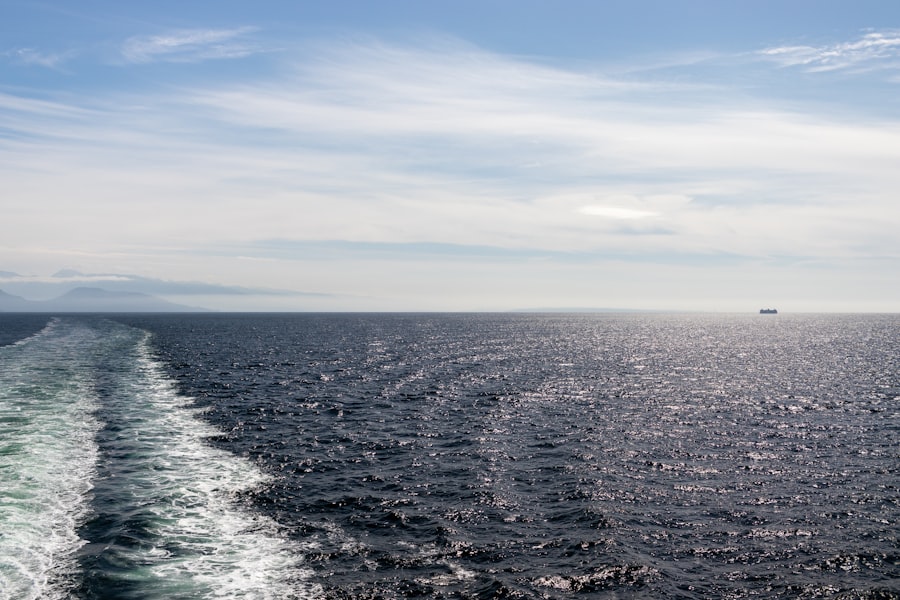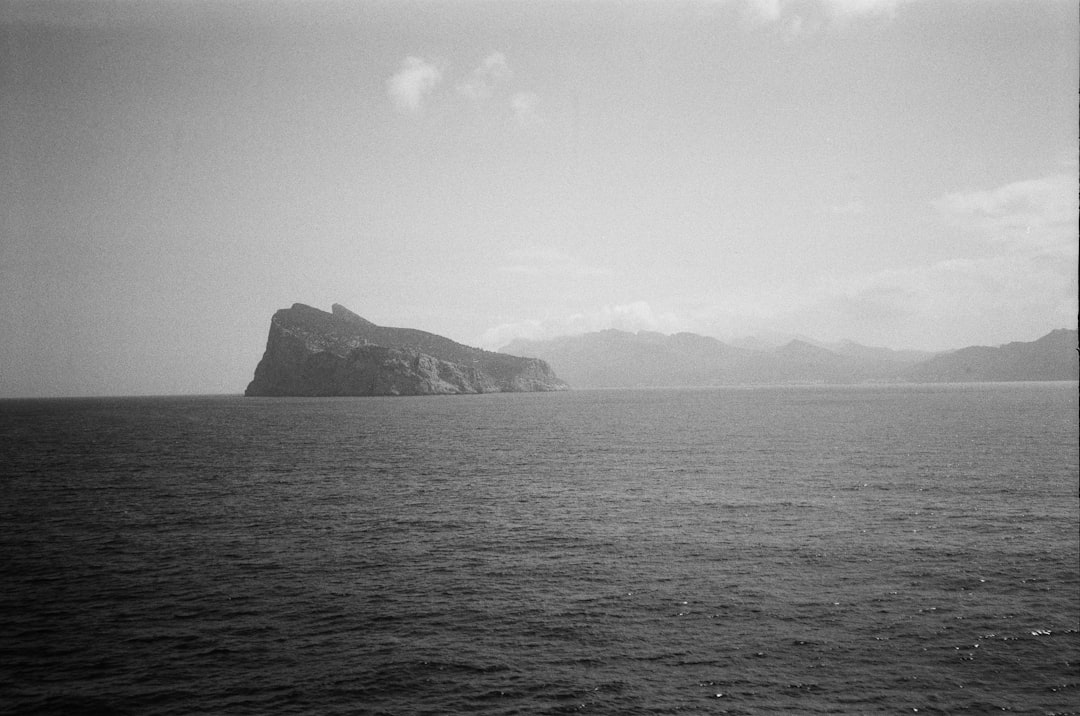The Drake Passage, a body of water situated between the southern tip of South America and Antarctica, is renowned for its tumultuous seas and unpredictable weather. This narrow stretch of ocean, measuring approximately 800 kilometers (500 miles) in width, serves as a critical conduit for maritime traffic between the Atlantic and Pacific Oceans. The passage is named after Sir Francis Drake, the English explorer who navigated these waters in the late 16th century.
Its strategic importance cannot be overstated, as it connects various shipping routes and facilitates access to the Antarctic region, making it a vital area for both commercial and scientific endeavors. Geographically, the Drake Passage is characterized by its deep waters and strong currents, which are influenced by the confluence of the Atlantic, Pacific, and Southern Oceans. The infamous Drake Shake, a term used to describe the often turbulent conditions of the passage, is a result of these currents and the lack of land barriers to mitigate wave action.
This unique geographical setting not only poses challenges for navigation but also creates a rich marine ecosystem that attracts adventurers and researchers alike. Understanding the dynamics of the Drake Passage is essential for anyone considering a journey through this remarkable yet formidable waterway.
Key Takeaways
- The Drake Passage is a body of water between South America’s Cape Horn and the South Shetland Islands of Antarctica, known for its rough seas and challenging sailing conditions.
- The weather in the Drake Passage is characterized by strong winds, high waves, and rapidly changing conditions, making it one of the roughest stretches of water in the world.
- The best time to cross the Drake Passage is during the austral summer (November to March) when the weather is relatively milder and the sea conditions are more favorable.
- When crossing the Drake Passage, it is important to consider factors such as seasickness, motion sickness, and the overall physical and mental preparedness of the passengers and crew.
- Safety precautions for crossing the Drake Passage include wearing appropriate clothing, securing all loose items, and following the instructions of the crew to ensure a safe and comfortable journey.
Weather and Climate in the Drake Passage
The weather in the Drake Passage is notoriously unpredictable, with conditions that can change rapidly within a matter of hours. The region experiences a maritime climate, characterized by cool temperatures and high humidity levels. Average temperatures range from 0°C to 10°C (32°F to 50°F), depending on the season.
However, it is not uncommon for sudden storms to sweep through the area, bringing fierce winds and heavy precipitation. These weather patterns are influenced by the passage’s proximity to Antarctica, where cold air masses collide with warmer ocean currents, creating a volatile environment. Wind speeds in the Drake Passage can reach alarming levels, often exceeding 50 knots during storms.
Mariners must remain vigilant and prepared for sudden changes in weather, as conditions can shift from calm to chaotic in an instant. Understanding these climatic factors is crucial for anyone planning to cross the Drake Passage, as they can greatly impact both safety and comfort during the journey.
Best Time to Cross the Drake Passage

Determining the best time to cross the Drake Passage involves careful consideration of weather patterns and sea conditions. The austral summer months, from November to March, are generally regarded as the most favorable period for crossing. During this time, temperatures are milder, and the likelihood of encountering severe storms diminishes significantly.
Additionally, these months coincide with peak tourist season in Antarctica, attracting numerous expedition vessels and cruise ships eager to explore the icy continent. While summer offers more stable conditions, it is essential to note that even during this period, weather can still be unpredictable. Mariners should remain prepared for rough seas and sudden changes in conditions.
Those planning a crossing should also consider their own tolerance for discomfort; some individuals may find even mild swells challenging. Ultimately, timing a crossing during the austral summer increases the chances of a smoother journey while allowing travelers to experience the breathtaking beauty of Antarctica.
Considerations for Crossing the Drake Passage
| Considerations for Crossing the Drake Passage |
|---|
| Weather conditions |
| Sea sickness |
| Duration of the crossing |
| Wildlife sightings |
| Experience level of passengers |
Crossing the Drake Passage requires careful planning and consideration of various factors that can influence the journey. One of the primary considerations is the choice of vessel. Different types of ships are equipped to handle varying sea conditions, and selecting an appropriate vessel can significantly impact safety and comfort during the crossing.
Another important factor to consider is the duration of the crossing. Depending on weather conditions and vessel speed, crossing the Drake Passage can take anywhere from 24 hours to several days.
Travelers should be prepared for potential delays due to adverse weather or other unforeseen circumstances. It is also advisable to have contingency plans in place, including alternative routes or accommodations if necessary. By taking these considerations into account, individuals can better prepare themselves for a successful crossing of this challenging waterway.
Safety Precautions for Crossing the Drake Passage
Safety should always be a top priority when crossing the Drake Passage. Mariners and travelers alike must be aware of potential hazards and take appropriate precautions to mitigate risks. One essential safety measure is ensuring that all safety equipment on board is in good working order.
This includes life jackets, lifeboats, flares, and communication devices. Regular safety drills should also be conducted to familiarize passengers with emergency procedures. In addition to equipment checks, travelers should stay informed about current weather conditions and forecasts before embarking on their journey.
Many vessels provide real-time updates on sea conditions, allowing passengers to make informed decisions about their activities on board. It is also wise for travelers to heed the advice of experienced crew members regarding safety protocols and best practices while at sea. By prioritizing safety and remaining vigilant throughout the crossing, individuals can enhance their overall experience while navigating this challenging passage.
Wildlife and Scenery in the Drake Passage

The Drake Passage is not only known for its challenging conditions but also for its stunning natural beauty and diverse wildlife. As travelers navigate these waters, they may encounter an array of marine life, including whales, seals, and various species of seabirds. The passage serves as a migratory route for several whale species, including humpback whales and orcas, making it an ideal location for wildlife enthusiasts hoping to observe these magnificent creatures in their natural habitat.
In addition to its rich marine life, the scenery surrounding the Drake Passage is breathtaking. Towering icebergs drift majestically through the waters, while snow-capped mountains loom in the distance. The stark contrast between the deep blue ocean and the white ice creates a mesmerizing landscape that captivates all who venture through this region.
Photographers and nature lovers alike find themselves enchanted by the raw beauty of the passage, making it a memorable part of any Antarctic expedition.
Choosing the Right Vessel for Crossing the Drake Passage
Selecting the right vessel for crossing the Drake Passage is crucial for ensuring a safe and comfortable journey. Various types of ships are available for this purpose, ranging from large cruise liners to smaller expedition vessels designed specifically for navigating icy waters. Larger ships may offer more amenities and stability but may not be as agile in rough seas as smaller vessels.
Conversely, smaller ships often provide a more intimate experience but may be more susceptible to challenging conditions. When choosing a vessel, travelers should consider factors such as size, stability, crew experience, and onboard amenities. Researching different operators and reading reviews from previous passengers can provide valuable insights into what to expect during the crossing.
Additionally, travelers should inquire about safety measures in place on board and whether crew members have experience navigating through the Drake Passage’s notoriously rough waters. By carefully selecting a vessel that aligns with their preferences and needs, individuals can enhance their overall experience while crossing this remarkable body of water.
Alternative Routes to Avoid the Drake Passage
For those who wish to avoid crossing the Drake Passage altogether, alternative routes exist that provide access to Antarctica without navigating its turbulent waters. One such option is traveling via air to King George Island or other locations along the Antarctic Peninsula. This method allows travelers to bypass the potentially rough seas while still experiencing the wonders of Antarctica upon arrival.
Another alternative involves taking longer maritime routes that skirt around the edges of the passage or utilize sheltered waterways when possible. While these routes may extend travel time significantly compared to a direct crossing through the Drake Passage, they offer a more comfortable experience for those who may be apprehensive about rough seas or prone to seasickness. Ultimately, exploring alternative routes can provide peace of mind while still allowing adventurers to embark on their Antarctic journey.
Historical Significance of the Drake Passage
The historical significance of the Drake Passage extends far beyond its challenging waters; it has played a pivotal role in maritime exploration and trade since its discovery. Sir Francis Drake’s navigation through these waters in 1578 marked one of the first recorded crossings of this treacherous passage, paving the way for future explorers seeking new trade routes and territories. Over time, numerous expeditions have traversed these waters in pursuit of scientific knowledge or adventure.
The passage has also been instrumental in shaping our understanding of ocean currents and climate patterns due to its unique geographical position at the confluence of three major oceans. Researchers continue to study this area to gain insights into global climate change and its effects on marine ecosystems. The historical legacy of exploration combined with ongoing scientific research underscores the importance of the Drake Passage as both a navigational challenge and a site of significant ecological interest.
Tips for a Smooth Crossing of the Drake Passage
To ensure a smooth crossing of the Drake Passage, travelers should take several practical steps before embarking on their journey. First and foremost, packing appropriately is essential; layering clothing is advisable due to fluctuating temperatures on board and outside. Waterproof gear is also recommended to stay dry during potential splashes or rain.
Additionally, travelers should consider taking seasickness medication before departure or bringing remedies such as ginger or acupressure bands to alleviate discomfort during rough seas. Staying hydrated and well-nourished can also help maintain energy levels throughout the journey. Engaging with fellow passengers and crew members can enhance camaraderie on board while providing valuable tips for coping with any challenges that may arise during transit.
Personal Experiences and Stories from Crossing the Drake Passage
Personal experiences from those who have crossed the Drake Passage often highlight both its challenges and rewards. Many travelers recount tales of encountering awe-inspiring wildlife during their journey—whales breaching alongside their vessel or seabirds soaring overhead against dramatic backdrops of icebergs and mountains. These moments create lasting memories that overshadow any discomfort experienced during rough seas.
Others share stories of camaraderie forged among passengers as they navigated turbulent waters together—bonding over shared experiences while exchanging laughter amidst uncertainty. Such narratives emphasize not only the beauty of nature but also the resilience of those who dare to traverse this formidable passage. Ultimately, personal stories from crossing the Drake Passage serve as reminders that adventure often lies just beyond one’s comfort zone—waiting to be discovered amidst both challenges and triumphs at sea.
If you’re planning a journey to Antarctica, one of the most significant milestones is crossing the Drake Passage, a notoriously challenging stretch of water between the southern tip of South America and the Antarctic Peninsula. For those interested in learning more about the logistics and timing of such an adventure, a related article on the topic can be found on MyGeoQuest. This resource provides valuable insights into the best times to embark on this journey, considering weather conditions and sea currents. For more detailed information, you can visit the article by following this link.
WATCH NOW! Drake Passage: Earth’s Deadliest Waters Revealed
FAQs
What is the Drake Passage?
The Drake Passage is the body of water between the southern tip of South America and the northern tip of the Antarctic Peninsula. It is known for its rough seas and challenging sailing conditions.
When is the best time to cross the Drake Passage?
The best time to cross the Drake Passage is during the austral summer, which runs from November to March. During this time, the weather is relatively milder and the seas are calmer, making for a more comfortable crossing.
When is the worst time to cross the Drake Passage?
The worst time to cross the Drake Passage is during the austral winter, which runs from April to October. During this time, the weather is harsher, and the seas are rougher, making for a more challenging and potentially dangerous crossing.
How long does it take to cross the Drake Passage?
The crossing of the Drake Passage typically takes around 2-3 days, depending on the weather and sailing conditions.
What should I expect during a crossing of the Drake Passage?
During a crossing of the Drake Passage, passengers can expect rough seas, strong winds, and potentially stormy weather. It is important to be prepared for seasickness and to follow the guidance of experienced crew members.
Are there any alternatives to crossing the Drake Passage?
There are alternative routes to reach Antarctica, such as flying to King George Island and then taking a cruise from there. However, for those looking for the traditional sailing experience, crossing the Drake Passage remains the most common route.
